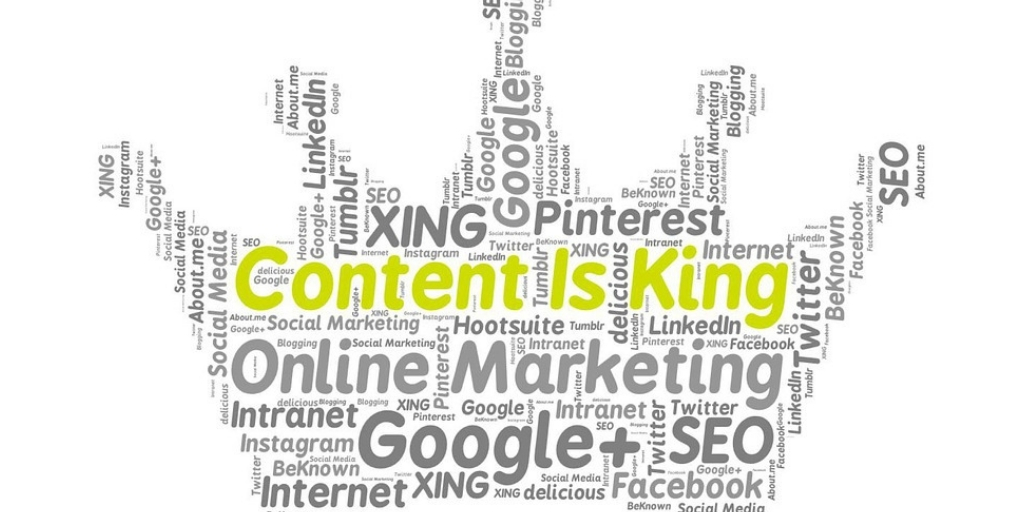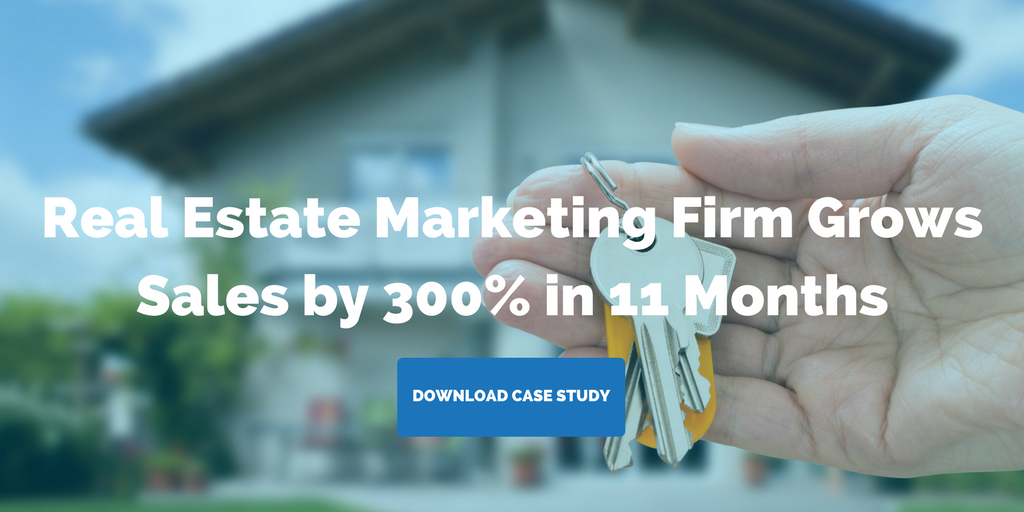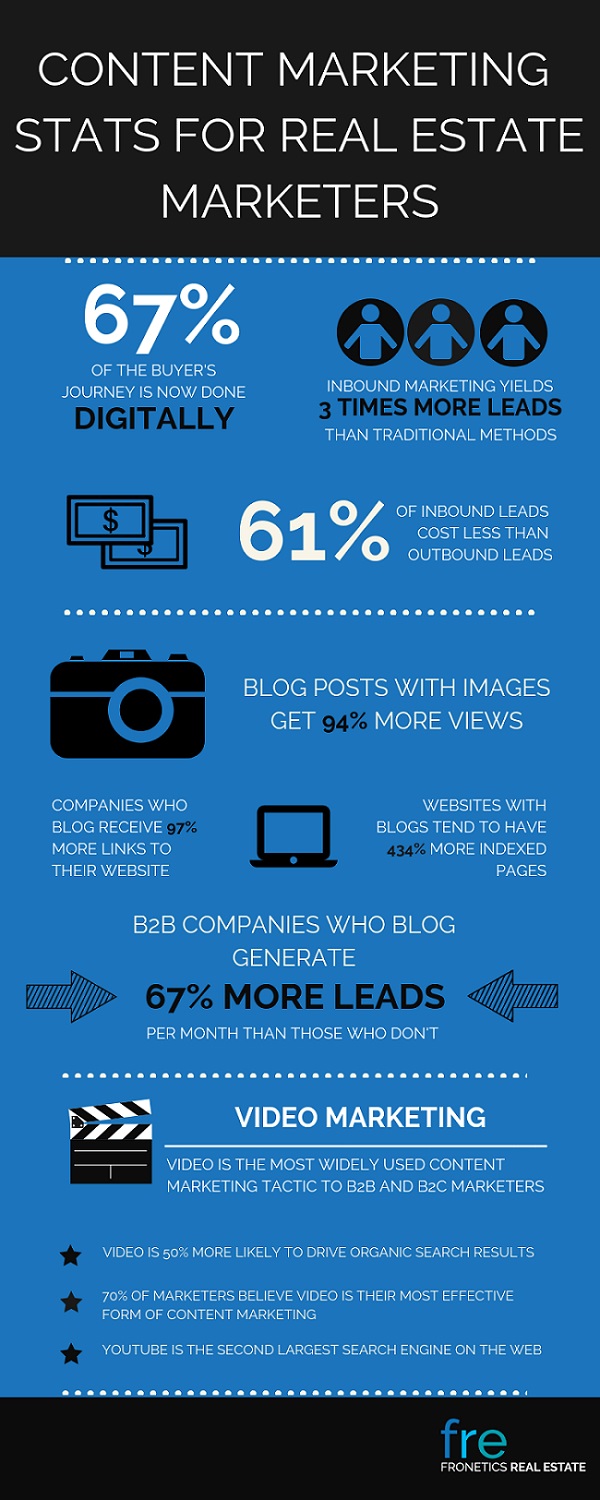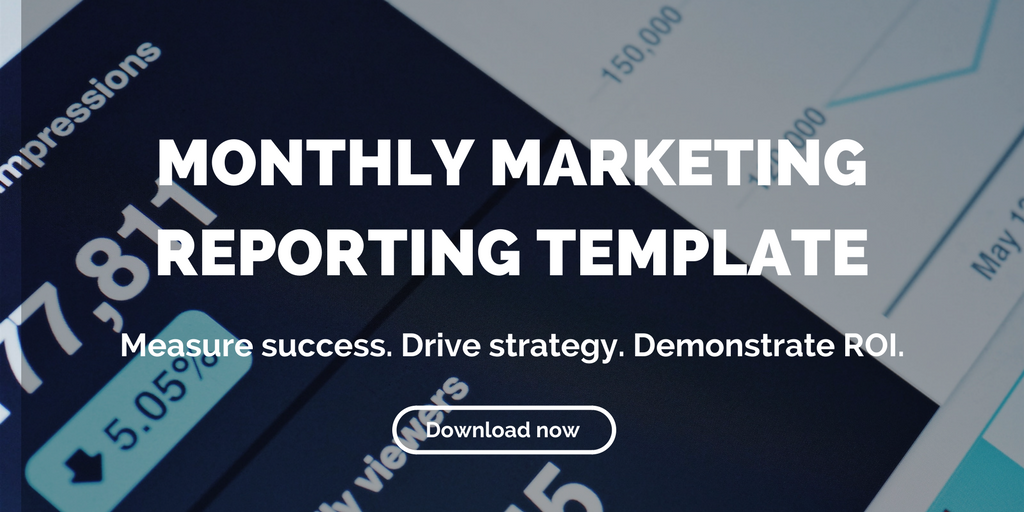Posts Tagged "inbound marketing"

How Digital Marketing for Real Estate Can Help Sell Properties
Digital marketing is the newest way to brand real estate. Here are the best ways to begin a digital marketing strategy for real estate that will help reach prospective buyers and tenants to ultimately close deals.
Increasingly, marketers are realizing the benefits of digital marketing for real estate over traditional types of marketing. From cost savings to increased lead generation, digital marketing can do wonders for your real estate business.
Real estate professionals are starting to catch on. According to Placester’s 2018 Real Estate Marketing Strategy Survey Report, 42.1% of real estate professionals surveyed plan to experiment with developing new types of content. And a whopping 94.1% plan to focus on creating new and unique content for their websites.
What is digital marketing?
Digital marketing is a new way to brand real estate through digital content and social media. A form of inbound marketing, digital marketing focuses on audiences finding you, allowing you to establish your brand as an industry leader, and let interested audiences come to you and your properties. This way, you draw in leads through interesting and engaging content.
Blog posts, social media, infographics, white papers, and videos are all types of content that you can use to market your brand. Blog posts that talk up the neighborhood in which your property is located, infographics that explain the purchasing process, or a white paper on how to search for an apartment are just a few examples of effective real estate content marketing.
How does digital marketing for real estate help you boost sales?
Particularly when it comes to luxury real estate, content marketing can help you in all kinds of ways. Most notably, it can:
- help you connect with qualified buyers;
- broaden your brand awareness;
- drive traffic to your property website;
- communicate real-time updates to potential buyers;
- generate leads;
- nurture leads; and
- sell your properties.
Where do I start?
If you’re looking to get started with digital and content marketing, FRE’s Director of Strategy Jennifer Yim recommends starting with social media and a blog.
“These tools can help you reach prospective buyers and tenants, nurture leads, and close deals,” says Yim.
Digital marketing is a new approach to an old strategy—one that’s putting real estate marketers in charge of the way potential buyers interact with their properties.
Need help getting started? Give us a call.
Related posts:
- Infographic: Content Marketing Statistics Every Real Estate Marketer Should Know
- 4 Types of Content Real Estate Marketers Need to Be Using
- How to Use Guest Posting as Part of Your Content Strategy
Posts Tagged "inbound marketing"

Infographic: Content Marketing Statistics Every Real Estate Marketer Should Know
It’s a given that if you’re a real estate marketer, content marketing should be a big part of your strategy. These are the content marketing statistics you should know about.
Real estate marketers should definitely be adding inbound marketing (content marketing) to your arsenal if you want to reach occupancy at your property. This doesn’t just mean the occasional blog or social media post. We’re talking a full range of content: video, high-value resources, etc.
We’ve pulled some of what we think are the most interesting content marketing statistics out there right now. Take a look at our infographic at the bottom of this post. We hope it will help spark some ideas for you own successful real estate marketing strategy.
Content marketing statistics — the big takeaways
This shouldn’t come as a surprise: the biggest thing you should be taking away from these statistics is that a well-documented, consistent content marketing strategy absolutely needs to be part of your overall business model.
Consider this: 90% of home buyers look online to find their next home, and 70% of them will be getting a sense for who you are through your online content. And by content, we don’t mean ads. we mean the inbound marketing materials like blog posts, videos, case studies, ebooks, and other content that you produce.
The content you create, curate, and share is the single best brand ambassador you have. Too many real estate marketers take a passive approach to their online reputations, rather than taking control of this goldmine of a resource. Content marketing is about using your expertise and what’s special about your brand to become a resource for your audience, and to generate leads by developing meaningful and lasting relationships with your prospects.
We’ve pulled together this infographic of content marketing statistics to give you a full picture of the value of content marketing when it comes to real estate.
Infographic: content marketing statistics for real estate marketers
Data for the infographic came from REASS. (Made with Canva)
Related posts:
- 10 Quick Ways to Grow Brand Awareness
- 4 Types of Content You Need to Sell Real Estate (Besides Listings)
- How to Use Guest Posting as Part of Your Content Strategy
Posts Tagged "inbound marketing"

How Inbound Marketing for Real Estate Works to Improve Sales
Increasingly, marketers are realizing the benefits of inbound marketing for real estate over outbound marketing, including cost savings and increased lead generation.
Marketers are constantly coming up with new and trendy ways to attract leads. With endless platforms available to us, it can be overwhelming for even the most seasoned marketers to know where they need to focus their efforts.
But what exactly does inbound marketing for real estate entail?
In order to find the right solutions for your real estate marketing needs, you first have to understand the difference between inbound and outbound marketing. And more importantly, how they can help — or hinder — your marketing efforts.
This is outbound marketing
Outbound marketing describes any marketing approach that pushes a message onto a buyer or renter. Traditional marketing — TV and radio ads, telemarketing, banner and display ads — are all examples of outbound marketing.
Another name for this marketing tactic is interruption marketing, as it typically tries to take “attention away from what your buyer is doing and bring it, forcibly, on to your product or service.”
This is inbound marketing
Inbound marketing focuses on audiences finding you. Instead of pushing a message onto buyers, inbound marketing allows you to establish your brand as an industry leader and let interested audiences come to you and your properties. This type of marketing attempts to draw in leads through interesting and engaging content.
Content marketing is a type of inbound marketing. Examples include blog posts, social media, infographics, white papers, and videos. Inbound marketing for real estate, for instance, could include blog posts that talk up the neighborhood in which your property is located, infographics that explain the purchasing process, or a white paper on how to search for an apartment.
Why is inbound marketing for real estate a good fit?
Outbound marketing used to be the “go-to” for generating leads, but this is simply no longer the case. Marketers across industries have found that inbound marketing has many advantages over traditional marketing practices. In fact, almost three quarters (68%) of inbound organizations believe their marketing strategy is effective, while more than half (52%) of outbound marketers don’t believe their strategy is effective.
According to Placester’s Matthew Bushery, “inbound is all about enticing the right buyers and/or sellers through sharing materials and resources that make them want to engage with you, rather than figuratively shoving your self-promotional messaging down their throats with over-the-top, aggressive, and — most importantly — wasteful marketing schemes.”
That’s why we think inbound marketing for real estate is better for marketers than outbound marketing.
Related posts:
- Infographic: Statistics that Prove Why Your Real Estate Marketing Needs to Include a Blog
- Content Marketing vs. Sales Staff: Who Does What?
- Our 6 Favorite Marketing Automation Tools for Real Estate Marketers
Posts Tagged "inbound marketing"

Content Marketing vs. Sales Staff: Who Does What?
When your content marketing and sales forces align their efforts, they form a powerful symbiotic relationship that grows your brand and your bottom line.
There’s a big misperception out there that content marketing represents some kind of threat to the job security of sales personnel.
It’s absolutely true that content marketing is an inbound approach, contrary to the traditional outbound approach of a real estate sales force. But make no mistake: Content marketing is not a substitute or replacement for an expert sales staff.
In fact, it’s when marketing and sales work in tandem that they’re most effective. They can help each other out to generate more leads, nurture current leads more effectively, and even help close more deals.
Content marketing helps generate a steady flow of quality leads, and it provides targeted information to usher prospects down the sales funnel. But even quality leads don’t turn into sales on their own. This is where a sales staff comes in — to take those leads and cultivate them into new business.
Content marketing vs. sales: Division of labor
For content marketing and sales to work seamlessly together, it’s important to have a clear idea of the role of each. They provide different touch points for leads at each stage of the buying cycle. Here’s a quick primer:
1. Forming a relationship
In this early stage of the cycle, your content marketing efforts go toward opening up a dialogue with potential buyers and renters. Often, potential leads’ first engagement with your property comes when they come across one of your blog posts while searching the web or see one of your social media posts because they’re connected to one of your followers.
This is when your sales staff picks up the ball, keeping that positive contact going by developing it into a conversation. It’s your sales team’s job to cultivate an ongoing personal relationship with leads that come in because they encountered your content.
2. Providing information
Now that you’ve established a relationship and your sales team is continuing a dialogue with your prospect, content marketing can step in. Potential buyers spend more time than ever researching properties, considering content such as blog posts, neighborhood guides, and social media posts before making a purchase decision. The content that you share with prospects at this stage of the buyer’s journey should be designed to answer informed questions and tip the scales in your favor.
At this stage, your sales staff should be directly answering questions from prospects. When a lead reaches out with a query, it’s likely that he or she has done a fair amount of research. So your sales reps need to speak specifically to the customer’s needs in a way that content alone can’t do to keep them interested and moving down the funnel.
3. Advocating for your brand
Content marketing increases brand awareness for your properties. It helps elevate your brand position within the real estate industry and keeps your property in their sightlines, even at a time when potential buyers aren’t ready to make a purchase.
When a prospect is preparing to make a purchase or to rent property, your sales staff is the primary advocate for your brand and properties. They should be proactive in pursuing business when leads show interest in your content or when they reach out with questions. They drive dialogue and get to know potential buyers and how your property can suit their needs.
A match made in heaven
When content marketing and sales work together, you’ll see the results hit your bottom line. Curating and creating great content will generate quality leads for your company and can empower your sales force to build relationships with potential buyers and renters — and to close the deal.
Related posts:
- Infographic: Real Estate Marketing Trends 2018
- 10 Social Media Statistics for Real Estate Marketers 2018
- How to Measure Brand Awareness: A Guide for Real Estate Marketers
Posts Tagged "inbound marketing"

Learn How Content Marketing Increased Real Estate Sales by 37% in 90 Days
This case study shows how home sales grew by more than one-third in 3 months with content marketing.
93 percent of all online experiences begin with a search engine, and 75 percent of searchers don’t move past the first page of search results. With home buyers increasingly more likely to start their purchasing research online, content marketing is a strategic way for real estate marketers to get their properties in front of more potential buyers.
What’s more, home buyers are influenced by peers and their interactions with websites, mobile apps, and social networks. The opportunities created by these online interactions can be competitive advantages for real estate marketers who are prepared to take advantage of this new landscape.
Consider this case study of a leading real estate marketing firm who chose to use digital and content marketing to shake up their traditional marketing approach.
After just three months of beginning a digital and content marketing program, the firm recognized significant gains in web traffic, social media engagement, and brand exposure. The firm recognized that unlike print, online mediums created opportunities for their firm to present target audiences with dynamic content. Optimizing their content and strategizing about its distribution boosted sales 37% for this real estate marketing firm in just 90 days.
Download the case study to find out how they achieved their remarkable results.
Related posts:





